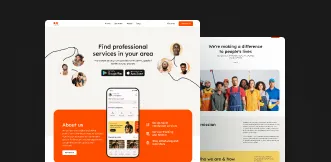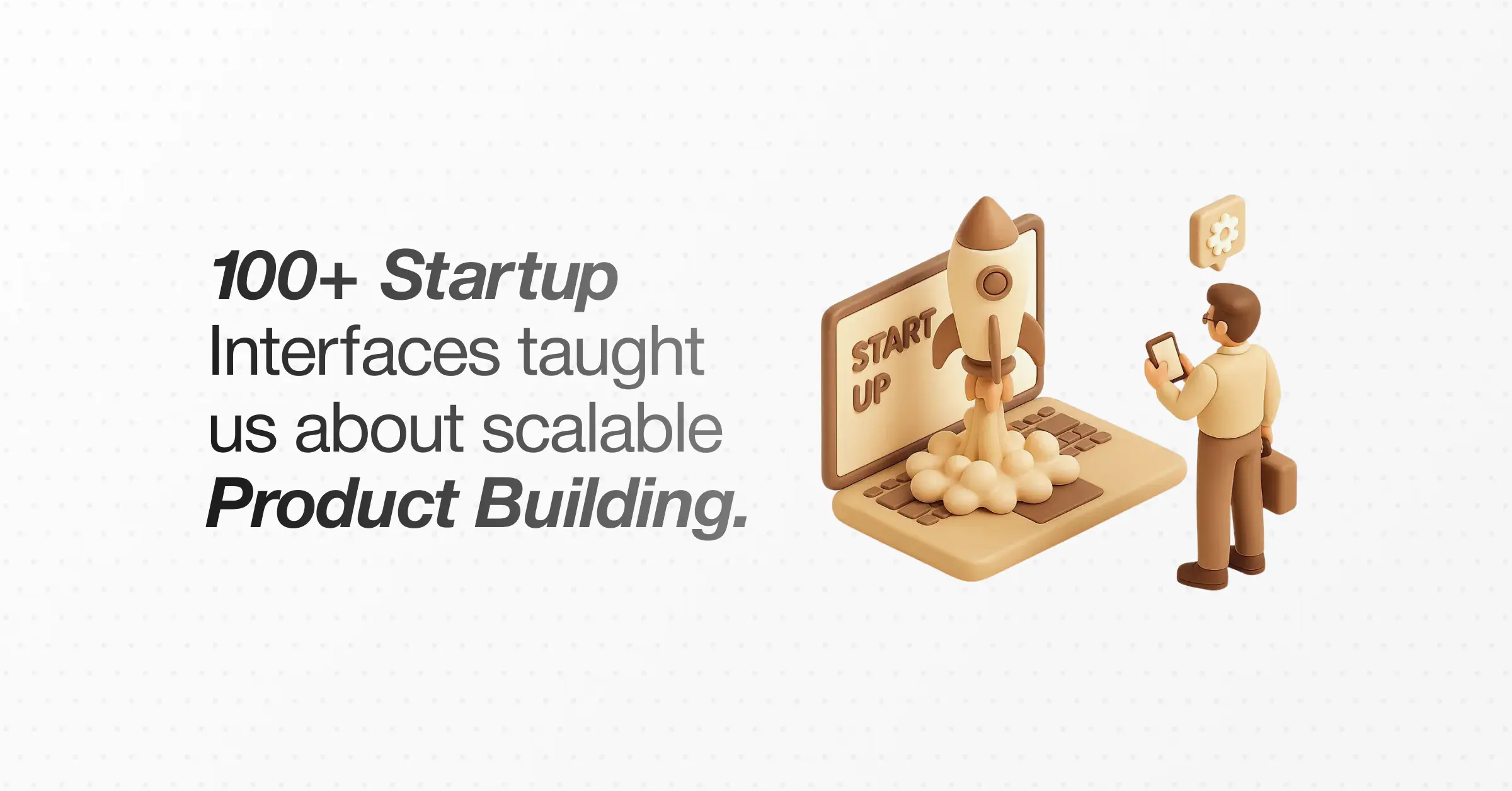Design
7 Inspiring Product Redesign Examples To Successful Relaunch
October 7, 2025
March 11, 2025

What if a single redesign could be 10x your growth? Believe it or not, you lose potential customers daily if your product feels outdated, confusing, or hard to use.
Giant companies like Facebook, Airbnb, and Twitter didn't just update their looks—they improved user experience, engagement, and revenue.
A smart redesign can take your product from outdated to outstanding.
A strategic product redesign can revitalize your brand, improve usability, and allow you to dominate your competitive market.
This blog breaks down 7 powerful product redesign examples that transformed brands and inspired your next move.
Ready to get inspired?
Let's dive in!
7 Product Redesign Examples
1. Facebook
We can’t get over how much work has been done here when reading the early "Welcome to The facebook" copy.
Facebook’s initial focus was on college communities, which was quite modest compared to its current number of users.
Facebook website in 2004: The old design was basic, text-heavy, and primarily aimed at students.
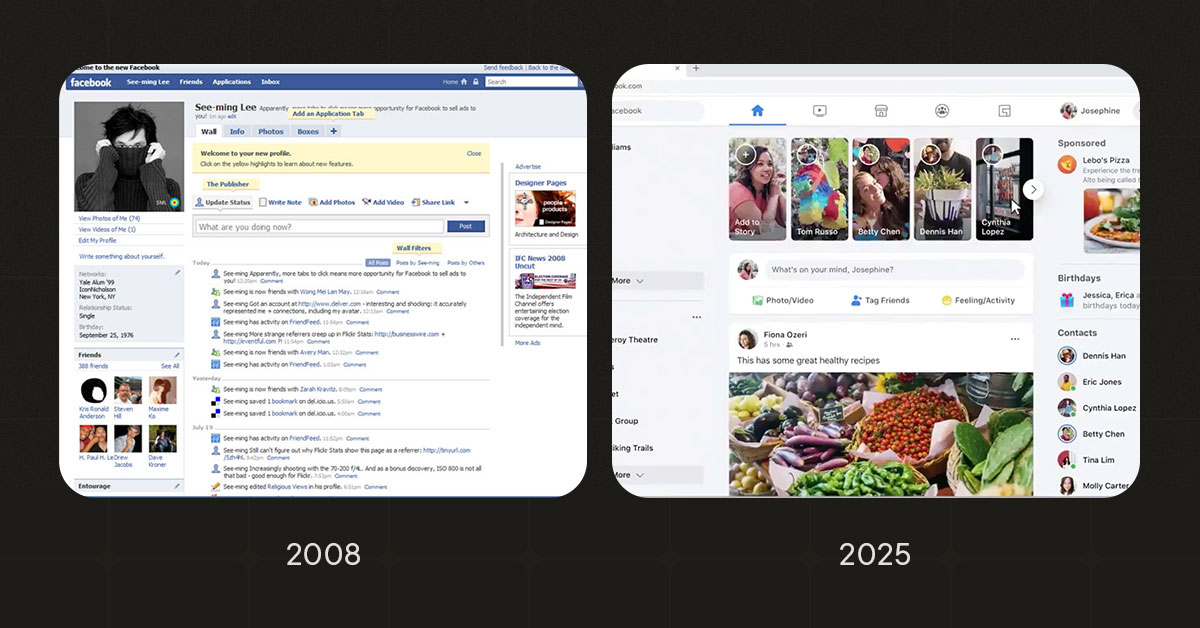
Now, Facebook’s redesigned website is clear, plain, and intuitive. They no longer need to explain the benefits of joining and avoid overwhelming visitors with excessive information. Instead, they focus on simplicity and easy navigation.
Takeaway: Simplify and modernize your design to enhance usability and engagement.
2. Twitter
Twitter started as a simple microblogging platform with a very basic layout. Over the years, it has evolved into a real-time news and conversation hub.
Twitter website in 2006: The original design was minimal and lacked a clear focus on engagement.
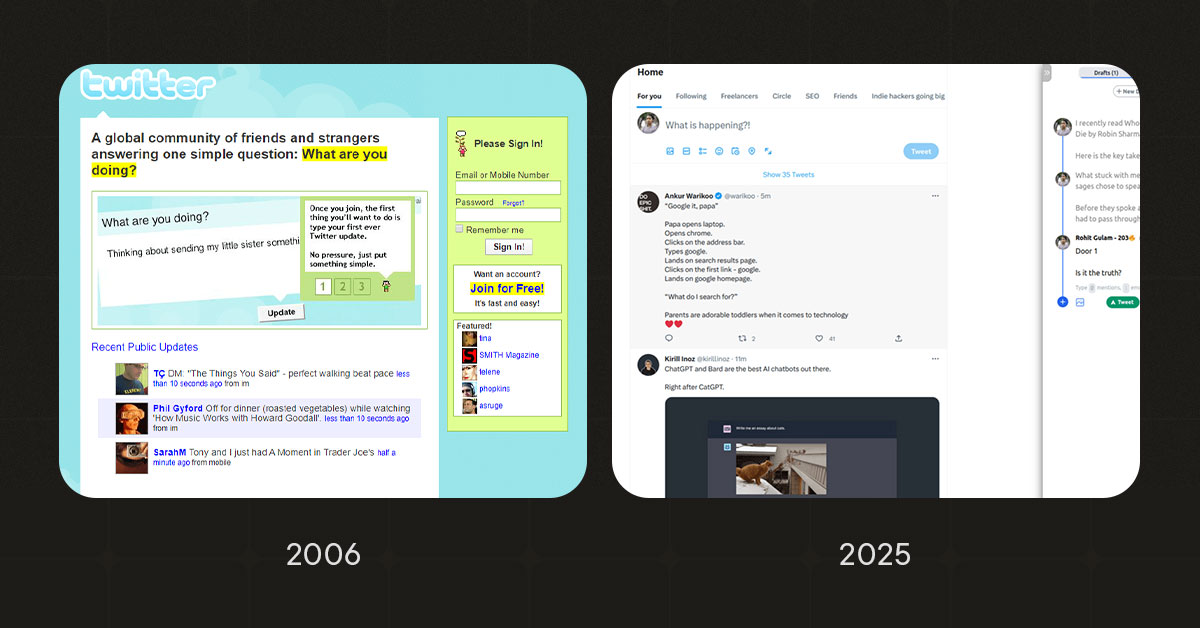
Today, Twitter’s modern UI is visually appealing, featuring trending topics, improved navigation, and a more engaging feed experience.
Takeaway: Adapt your design to highlight user-generated content and real-time interactions.
3. Airbnb
Airbnb's redesign focused on showcasing properties in a visually compelling way. The original website relied heavily on text, making it harder to browse and compare options.
Old Airbnb Design: Listings were cluttered with information, making the booking process confusing.
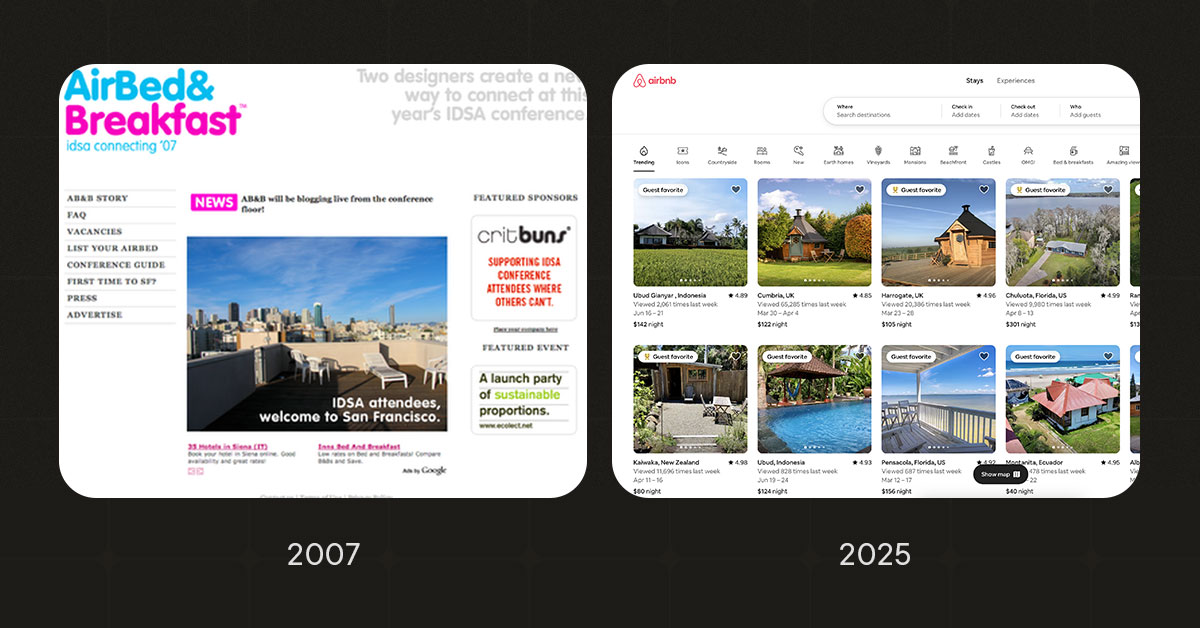
New Airbnb Design: A cleaner, image-driven experience that helps users quickly find the perfect stay.
Takeaway: Prioritize high-quality visuals and a seamless user journey.
4. Uber
Uber’s redesign simplified the ride-booking experience by removing unnecessary complexity.
Old Uber Design: A cluttered interface with too much information presented at once.
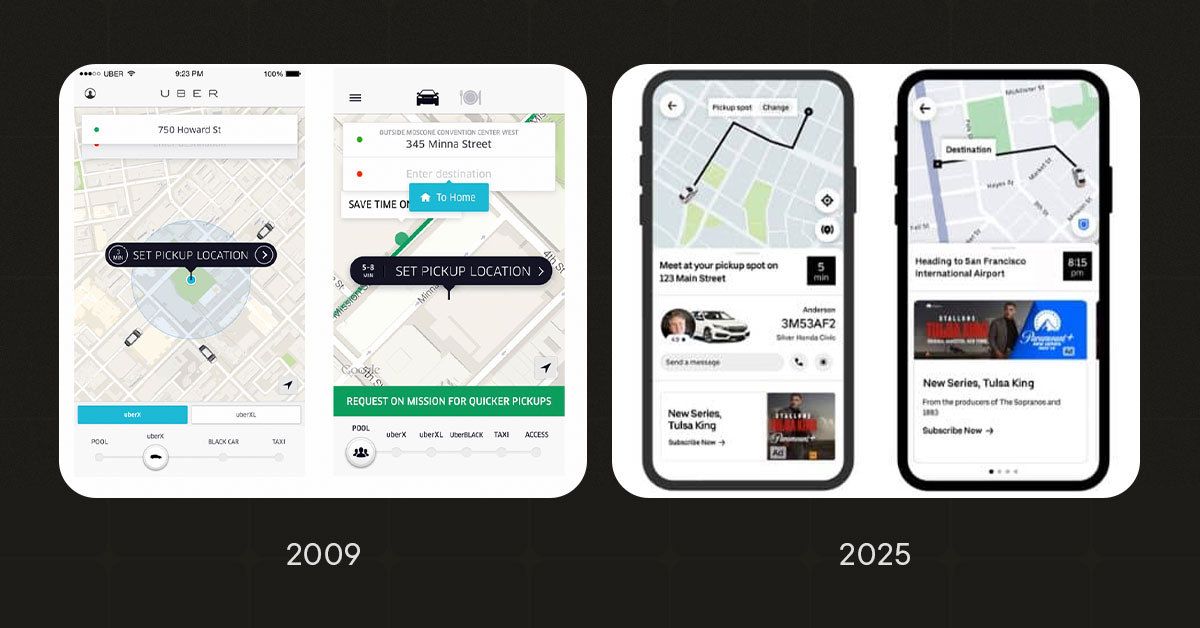
New Uber Design: A streamlined UI with real-time tracking and a focus on usability.
Takeaway: Remove friction from your user journey to improve efficiency and satisfaction.
5. Instagram
Instagram’s major redesign in 2016 introduced a modern look and improved usability.
Old Instagram Design: The interface was outdated, and the navigation felt clunky.

New Instagram Design: A minimalist, modern UI with improved content discovery.
Takeaway: A fresh, simplified design can boost engagement and make content consumption more enjoyable.
6. Slack
Slack improved its platform by decluttering the interface and making navigation more intuitive.
Old Slack Design: The sidebar was chaotic, making it difficult to locate conversations.
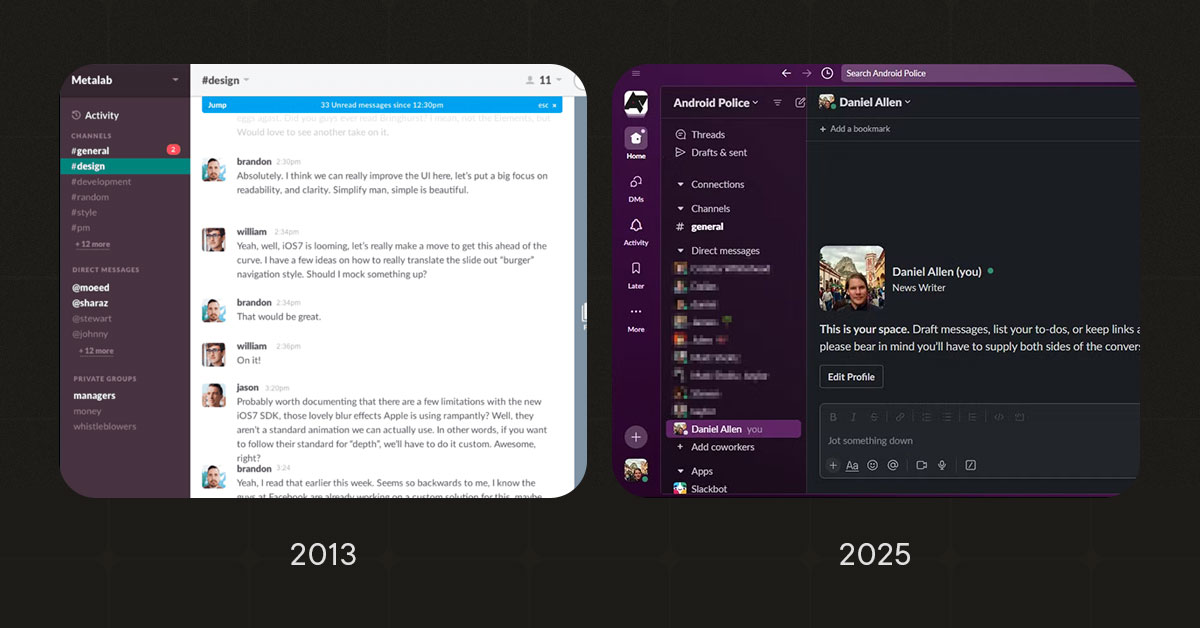
New Slack Design: A more structured sidebar with a refined color palette for better usability.
Takeaway: Organizing your platform’s layout effectively improves workflow efficiency.
7. Spotify
Spotify’s redesign focused on aesthetics and accessibility.
Old Spotify Design: A light UI with readability challenges.
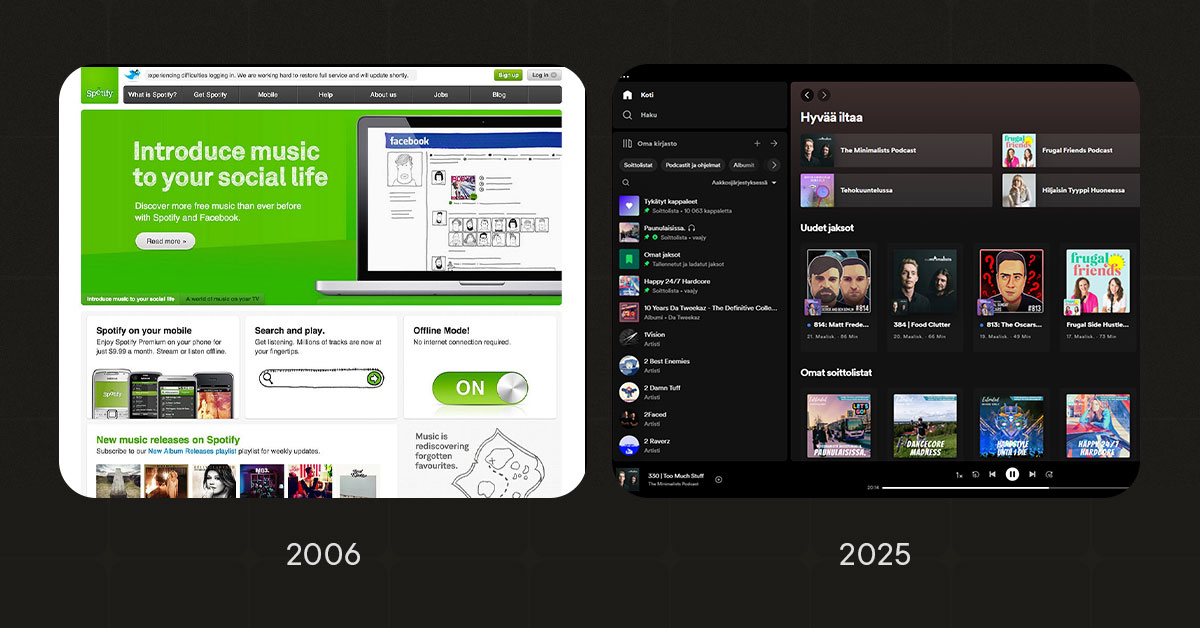
New Spotify Design: A dark mode interface that enhances visibility and user comfort.
Takeaway: Consider accessibility and user preferences when making design choices.
Why Product Redesign Matters for Startups
1. Enhances User Experience (UX)
A well-executed product redesign improves usability, making it easier for customers to navigate and interact with your product. According to Forrester Research, a well-designed UX can increase customer conversion rates by up to 400%.
Additionally, 88% of online consumers are less likely to return to a website after a bad user experience.
2. Boosts Customer Engagement & Retention
Outdated designs can make users disengage quickly. A fresh redesign with an intuitive UI can lead to higher engagement, longer session durations, and increased customer loyalty.
Research shows that companies that invest in UX design see an average increase of 200% in user engagement.
3. Increases Conversion Rates
A seamless user experience can improve conversion rates by up to 400%. If your product isn’t converting leads into customers, a redesign focused on CTAs, simplified navigation, and a frictionless checkout process can significantly boost conversions.
For example, HubSpot redesigned its landing pages, which resulted in a 27% increase in conversions due to better CTA visibility and user-friendly design.
4. Strengthens Brand Identity & Market Position
A strong brand identity is crucial for standing out in competitive markets. A product redesign helps startups align with new business goals, trends, and customer expectations.
Companies that modernize their branding and UI see higher customer trust and retention.
5. Adapts to Technological Advances
With 57% of users stating they won’t recommend a business with a poorly designed mobile site (Google), keeping up with modern trends is essential.
A successful product redesign incorporates AI, automation, mobile-first optimization, and accessibility to ensure continued relevance.
When Do You Need a Redesign Service for Your Product?
Not every product needs a complete redesign service, but there are key indicators that signal it’s time for a refresh:
1. Declining user engagement
If customer interaction and retention rates are dropping, a redesign might be necessary.
2. Outdated design and UX
A clunky, outdated interface can drive users away.
3. Low conversion rates
If your product isn’t generating leads or sales, a UI/UX overhaul can help.
4. Negative customer feedback
Complaints about usability, performance, or aesthetics indicate a need for improvements.
5. Rebranding or business expansion
If your company is repositioning itself, your product should align with your new vision.
6. Technological advancements
Keeping up with the latest trends and integrations ensures continued relevance.
If your product is showing any of these signs, a well-planned redesign team can give it a fresh appeal and improve functionality.
Stages of the Product Redesign Process Properly
A successful product redesign process involves structured planning and execution.
Here’s how to approach it:
1. Research & Analysis
- Gather user feedback and analytics to identify pain points.
- Conduct competitor analysis to understand industry trends.
2. Define Goals
- Determine whether your focus is on engagement, sales, or brand modernization.
- Align redesign efforts with your startup’s growth strategy.
3. Wireframing & Prototyping
- Develop wireframes and prototypes to test different design layouts.
- Conduct A/B testing to refine the best design choices.
4. Development & Testing
- Implement the new design while ensuring minimal disruption.
- Test across multiple devices and platforms for seamless functionality.
5. Launch & Optimization
- Roll out the redesign and monitor performance.
- Collect feedback and optimize the design based on user behavior.
Redesign Your Products with Ofspace Digital Agency
A successful product redesign boosts usability, engagement, and conversions. As seen in these product redesign examples, brands that evolve stay competitive.
If your product feels outdated or isn’t converting, now is the time to act.
A successful product redesign can improve user experience, engagement, and sales. At Ofspace Digital Agency, we specialize in product redesign Services that align with your business goals. We have successfully redesigned AI project, real-state app, fintech app, GrabStar, and more and have served 100+ Projects.
Ready to relaunch your product successfully? Contact us today or book a free 15-minute call with our product redesign expert to ensure a successful launch.
Frequently Asked Questions
1. How often should a product be redesigned?
It depends on user feedback, technological advancements, and business goals. Generally, products should be evaluated for redesign every 2-5 years.
2. How long does a product redesign take?
The timeline varies based on complexity, but most redesigns take between 3-9 months.
3. Will a redesign negatively affect existing users?
If done correctly with user feedback in mind, a redesign should improve user experience rather than alienate existing users.
4. How do I measure the success of a redesign?
Key performance indicators (KPIs) such as user engagement, conversion rates, and customer feedback are strong indicators of success.
5. What’s the difference between a redesign and a refresh?
A refresh involves minor tweaks, while a redesign is a complete overhaul of the product’s functionality and appearance.

